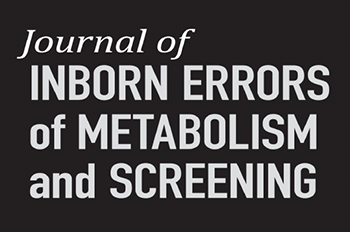We read with interest the review article by El-Hattab et al about the effect of nitric oxide (NO) precursors in the treatment of patients with mitochondrial encephalopathy, lactic acidosis, and stroke-like episode (MELAS) syndrome and of stroke-like episodes (SLEs) in particular.11 El-Hattab AW, Almannai M, Scaglia F. Arginine and citrulline for the treatment of MELAS syndrome. J Inborn Errors Metab Screen. 2017;5. doi:10.1177/2326409817697399.
https://doi.org/10.1177/2326409817697399...
We have the following comments and concerns.
NO deficiency in mitochondrial disorders (MIDs) is most likely a secondary phenomenon and not the primary causative mechanism that leads to clinical manifestations in MIDs. Whether supplementation with NO precursors truly increases the intracellular and serum levels of NO is questionable. However, there are a number of reports, pretending a beneficial effect of NO precursors for MIDs in general and for SLEs in particular.22 Kubota M, Sakakihara Y, Mori M, Yamagata T, Momoi-Yoshid M. Beneficial effect of L-arginine for stroke-like episode in MELAS. Brain Dev. 2004;26(7):481. On the other hand, no systematic studies with an appropriate design (double-blind, placebo-controlled crossover) had been carried out that proved or disproved effectiveness of NO precursors in MELAS or SLEs. Furthermore, it has been reported that headache as a manifestation of a SLE may be resistant to l-arginine.33 Tsujikawa K, Yokoi S, Yasui K, Hasegawa Y, Hoshiyama M, Yanagi T. Effectiveness of midazolam for L-arginine-resistant headaches during stroke-like episodes in MELAS: a case report [Article in Japanese]. Rinsho Shinkeigaku. 2014;54(11):882-887.
The authors mention a number of therapeutic options available for patients with MID. However, many options are not addressed, particularly those which may significantly prolong life in these patients.44 Finsterer J, Bindu PS. Therapeutic strategies for mitochondrial disorders. Pediatr Neurol. 2015;52:302-313. These include oral anticoagulation, heart failure therapy, antiarrhythmic therapy with drugs or implantation of a pacemaker, a cardiac resychronisation therapy (CRT) system, or an implantable cardioverter defibrillator, and invasive or noninvasive mechanical ventilation.44 Finsterer J, Bindu PS. Therapeutic strategies for mitochondrial disorders. Pediatr Neurol. 2015;52:302-313. In this respect, it is necessary to mention idebenone as an approved drug for the treatment of patients with Leber hereditary optic neuropathy, which has been shown to improve color vision, increase cell-specific ATP production, and decrease oxidative stress.55 Carelli V, Carbonelli M, de Coo IF, et al. International Consensus Statement on the Clinical and Therapeutic Management of Leber Hereditary Optic Neuropathy. J Neuroophthalmol. 2017;37: 371-381.
We do not agree with the statement that SLEs represent ischemic strokes. Stroke-like episodes are the clinical manifestation of a stroke-like lesion (SLL) on MRI, which is clearly distinguishable from an ischemic lesion. The main difference between the 2 is that SLLs are not confined to a vascular territory, whereas ischemic stroke is restricted to the vascular territory of the occluded artery. A second difference is that SLLs manifest as vasogenic edema (hyperintensity on diffusion weighted imaging [DWI], hyperintensity on apparent diffusion coefficient [ADC]) and that ischemic lesions manifest as cytotoxic edema (hyperintensity on DWI, hypointensity on ADC). A third difference is that SLLs show a dynamic course over days, weeks, or even months, whereas ischemic lesions usually reach its final stage within a few days after onset. Fourth, residual imaging findings may also differ between the 2 entities (laminar cortical necrosis, toe-nail sign, white matter lesions, normal brain in SLLs and lacunas, cysts, or white matter lesions in ischemic stroke).
Since SLEs are frequently associated with seizures,66 Fryer RH, Bain JM, De Vivo DC. Mitochondrial encephalomyopathy lactic acidosis and stroke-like episodes (MELAS): a case report and critical reappraisal of treatment options. Pediatr Neurol. 2016;56:59-61. it is essential that EEGs are recorded in all patients with a MID experiencing a SLE. As soon as seizure activity is recorded, patients with an SLE require treatment with an antiepileptic drug (AED).77 Whittaker RG, Devine HE, Gorman GS, Schaefer AM, Horvath R, Ng Y, et al. Epilepsy in adults with mitochondrial disease: a cohort study. Ann Neurol. 2015;78(6):949-957. However, only nonmitochondrion-toxic AEDs and AEDs that are applicable intravenously should be given. Particularly avoided should be valproic acid, carbamazepine, phenytoin, and barbituric acid.88 Finsterer J. Toxicity of antiepileptic drugs to mitochondria. Handb Exp Pharmacol. 2017;240:473-488.
In summary, there is currently no proof from appropriately designed studies that NO precursors are effective in MIDs or SLEs. Stroke-like episodes need to be differentiated from ischemic stroke, since treatment options vary considerably between these 2 conditions. There is also a need to record EEGs during SLEs since AEDs may be indicated. In general, patients with MID profit significantly from symptomatic treatment, particularly in case of cerebral or cardiac involvement.
References
-
1El-Hattab AW, Almannai M, Scaglia F. Arginine and citrulline for the treatment of MELAS syndrome. J Inborn Errors Metab Screen 2017;5. doi:10.1177/2326409817697399.
» https://doi.org/10.1177/2326409817697399 -
2Kubota M, Sakakihara Y, Mori M, Yamagata T, Momoi-Yoshid M. Beneficial effect of L-arginine for stroke-like episode in MELAS. Brain Dev 2004;26(7):481.
-
3Tsujikawa K, Yokoi S, Yasui K, Hasegawa Y, Hoshiyama M, Yanagi T. Effectiveness of midazolam for L-arginine-resistant headaches during stroke-like episodes in MELAS: a case report [Article in Japanese]. Rinsho Shinkeigaku 2014;54(11):882-887.
-
4Finsterer J, Bindu PS. Therapeutic strategies for mitochondrial disorders. Pediatr Neurol 2015;52:302-313.
-
5Carelli V, Carbonelli M, de Coo IF, et al. International Consensus Statement on the Clinical and Therapeutic Management of Leber Hereditary Optic Neuropathy. J Neuroophthalmol 2017;37: 371-381.
-
6Fryer RH, Bain JM, De Vivo DC. Mitochondrial encephalomyopathy lactic acidosis and stroke-like episodes (MELAS): a case report and critical reappraisal of treatment options. Pediatr Neurol. 2016;56:59-61.
-
7Whittaker RG, Devine HE, Gorman GS, Schaefer AM, Horvath R, Ng Y, et al. Epilepsy in adults with mitochondrial disease: a cohort study. Ann Neurol 2015;78(6):949-957.
-
8Finsterer J. Toxicity of antiepileptic drugs to mitochondria. Handb Exp Pharmacol 2017;240:473-488.
Publication Dates
-
Publication in this collection
2018
History
-
Received
05 Dec 2017 -
Accepted
04 Jan 2018

